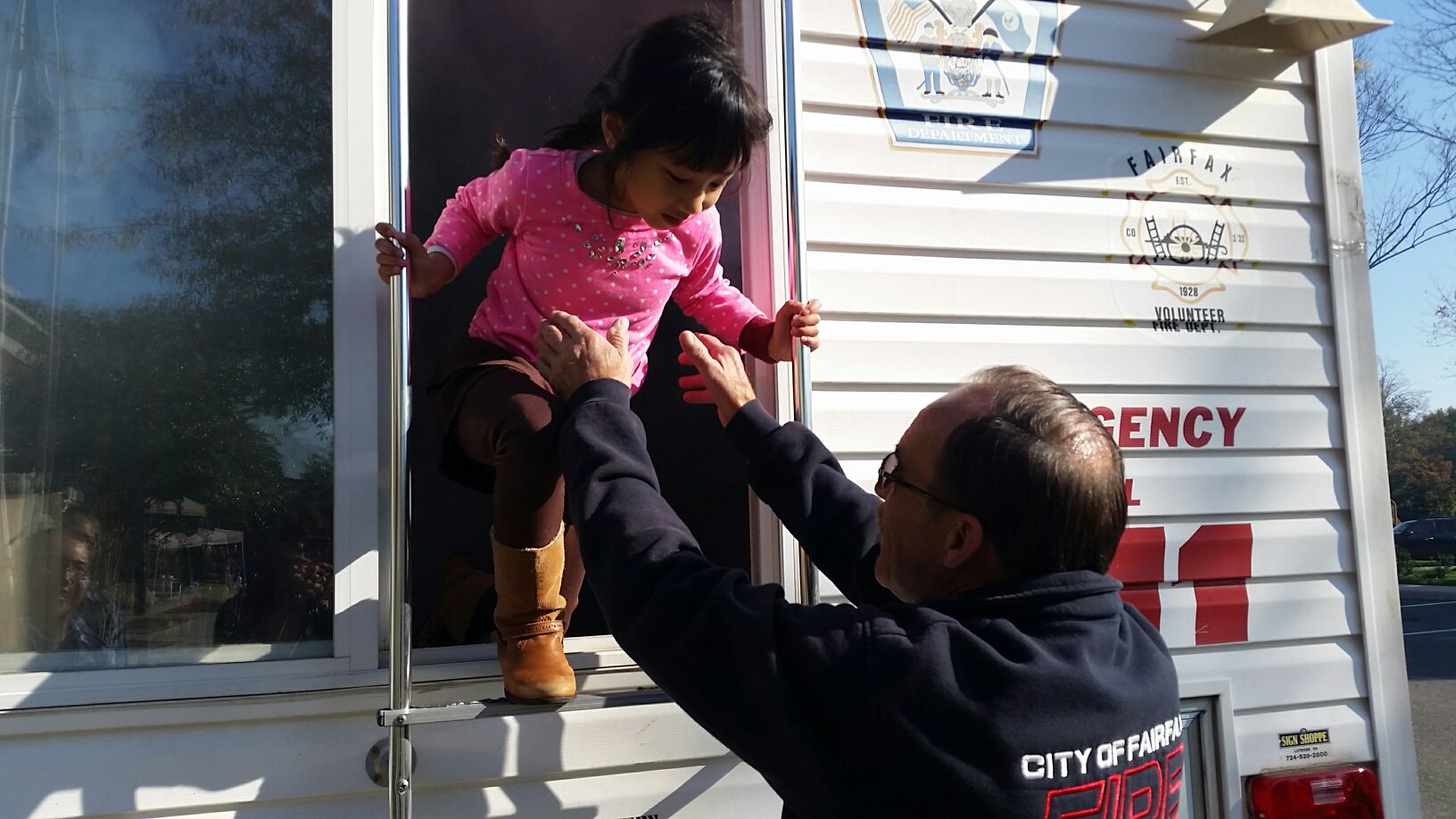
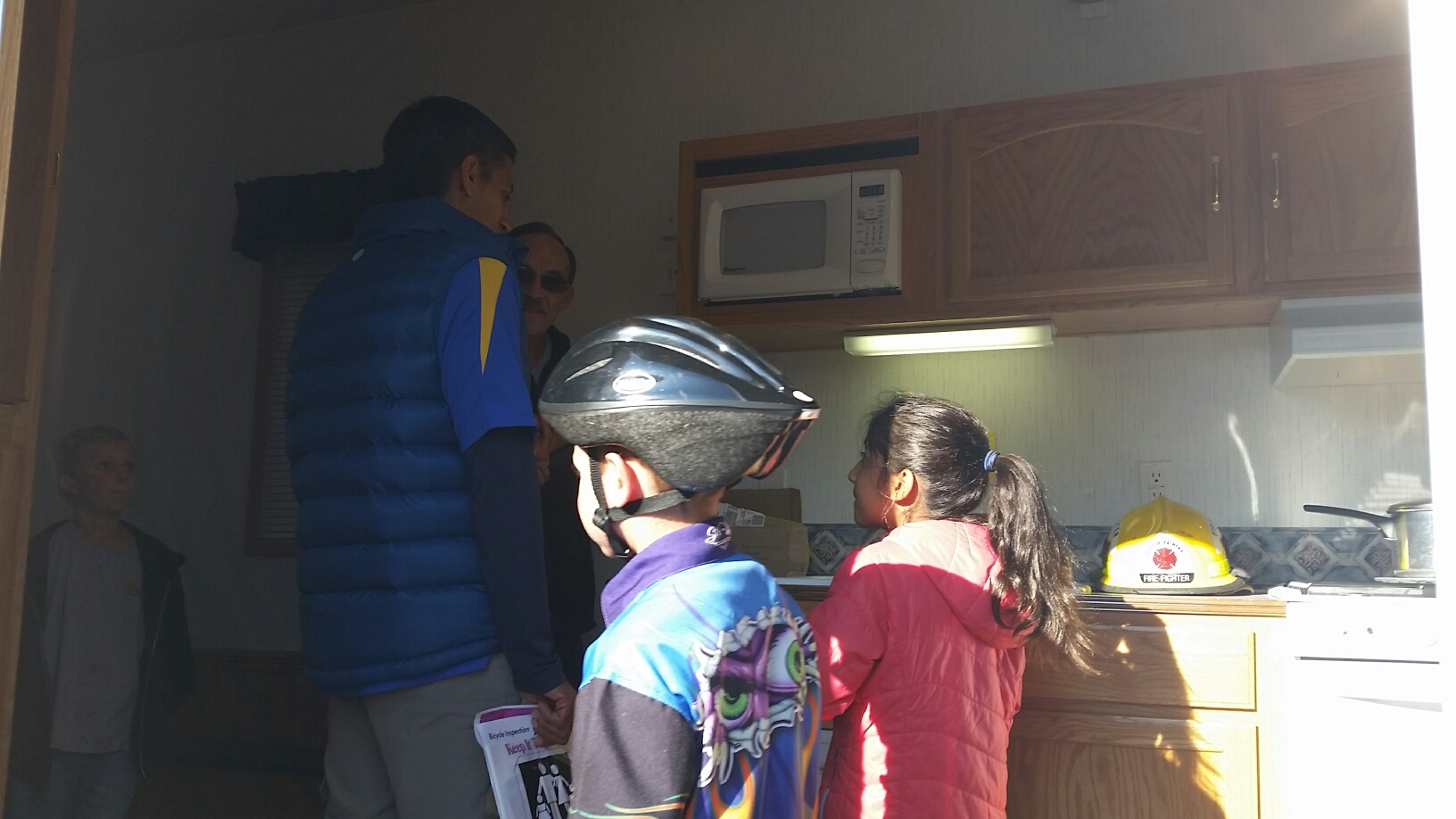
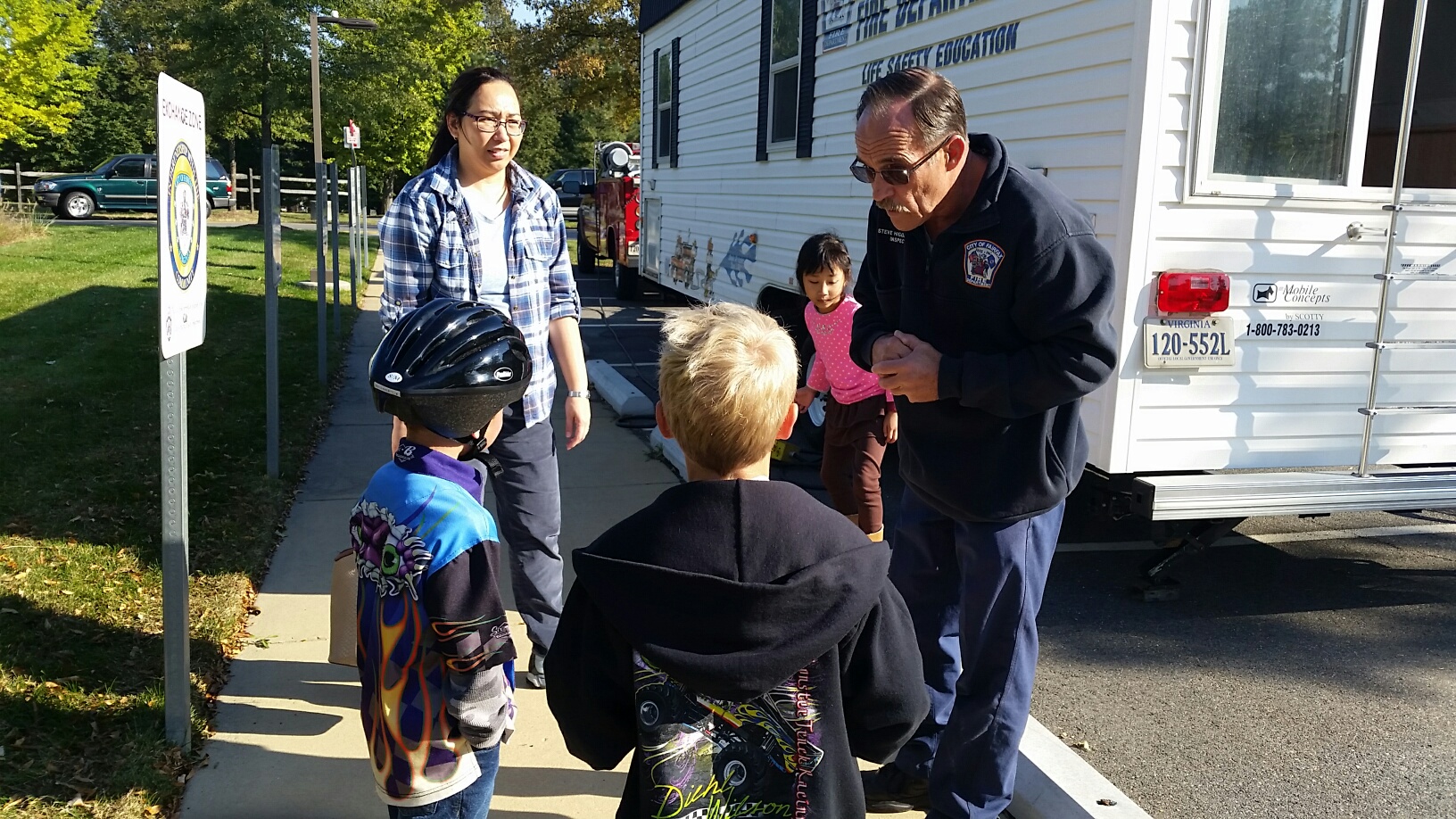
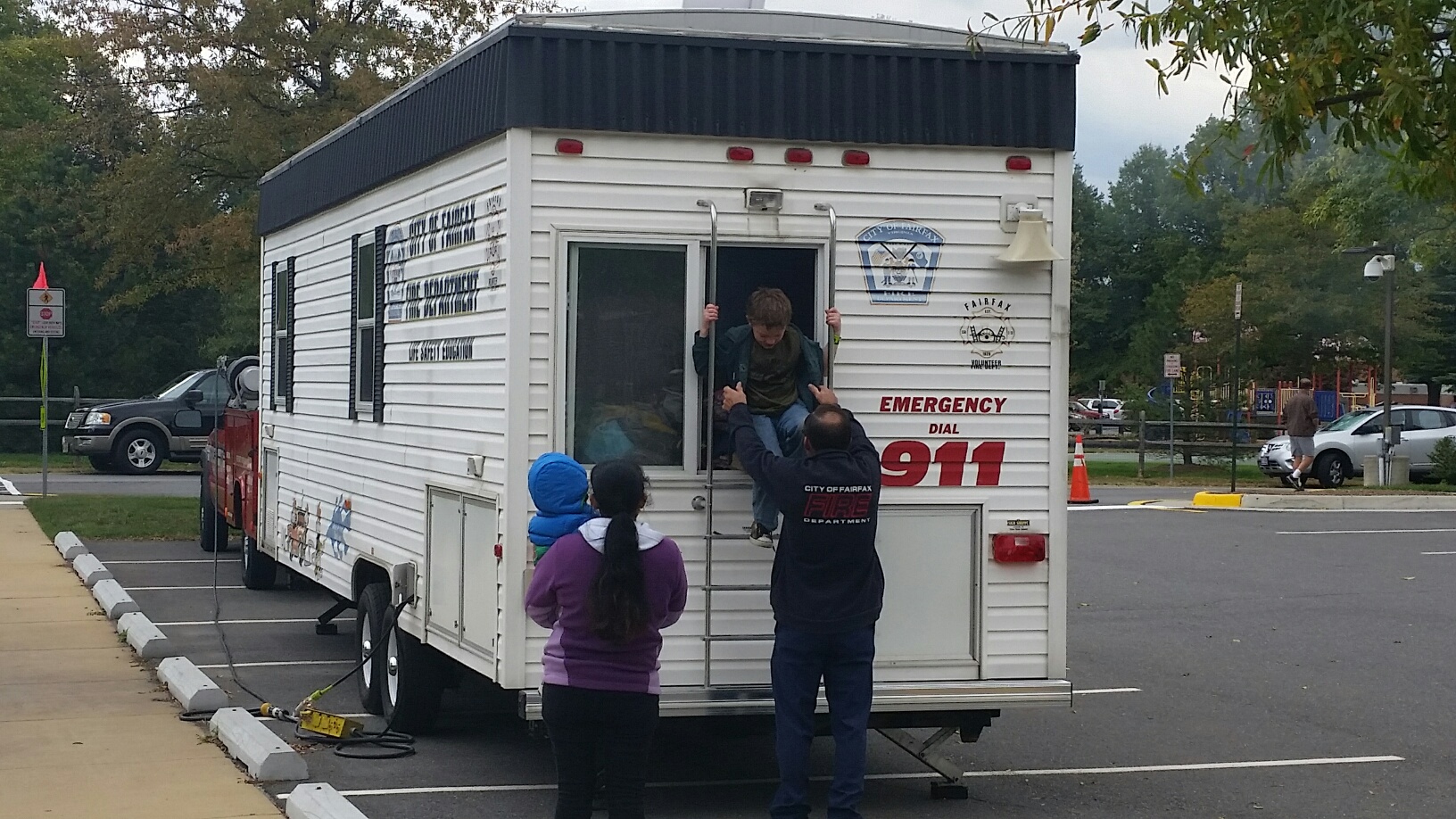
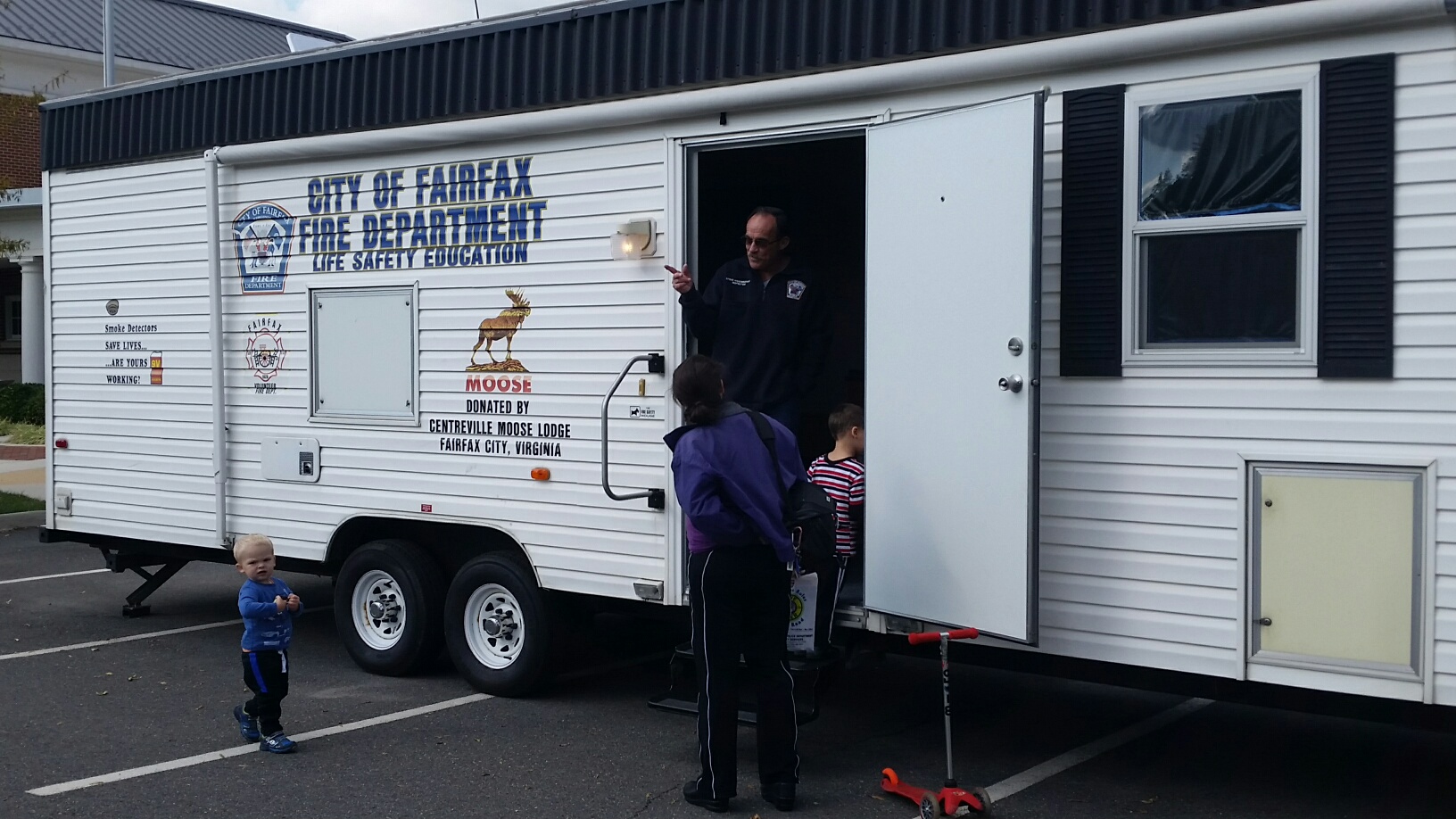
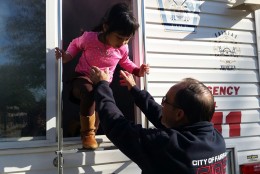

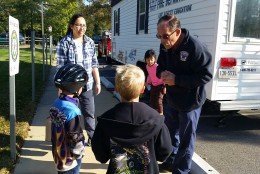
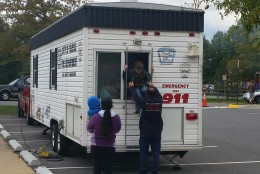
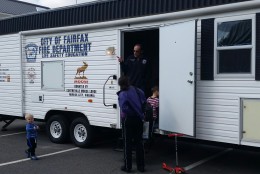
WASHINGTON—As you trim your tree or light your menorah, it’s important to remember that the holiday season sees more house fires than the rest of the year, fire officials say.
Steve Higginbotham, senior inspector with the City of Fairfax fire department, says it’s even more important to be prepared. Just in case, put together a fire escape plan and practice it with your family.
Higginbotham provides hands-on fire safety tips for the community in a unique way. The Life Safety Trailer, a mobile unit that simulates dangerous fire conditions, teaches kids and their parents how to respond to different situations. Higginbotham brings the trailer to schools and events around the community. The idea is to let people experience what a house fire is like, smoke included, and then show them how to get out safely. The smoke isn’t real, Higgbotham says. The real stuff is quite toxic. “Four or five breaths and you’re done.”
On the top of Higginbotham’s list of fire safety tips: Close your bedroom door, and your child’s. If there’s a fire while you’re sleeping, get down to the floor, away from the smoke. “When you reach the door, feel it to see if it’s hot,” Higginbotham says. “If it’s not hot, open it slowly and make your way out of the house.”
During a real fire, the captain will look for people trapped inside. “You’ll know when we get to your house because we make a lot of noise with bells and sirens,” Higginbotham says. Still, make sure your fire escape plan has two exit strategies for each room. “Every bedroom has to have windows in it. If you’ve got kids sleeping in a room without a window, move them.”
He says another major component of your fire safety plan should be your designated outdoor meeting spot. Make sure everyone in your family knows where to reconvene after escaping the house.
Higginbotham says it’s startling how few parents have practiced their fire escape plans with their families. He says more fires happen at home than at school. “We’re drilling them in schools but you need to have them at your house,” he says, “It would be a shame for everyone to get out and then mom looks at dad and says, “where’s the baby.” At that point it’s too late.”
“You don’t have a plan to execute and that’s when the really bad things happen,” Higginbotham says, “when people lose their lives.”
Fairfax City fire department’s Life Safety Trailer teaches you what do do in a fire. @wtop pic.twitter.com/MLGfEaE4G3
— Kathy Stewart (@KStewartWTOP) December 5, 2015







